The Mastador is a kind, gentle and loyal dog. This gentle giant will be the heart and soul of the family, getting along with everyone they meet.
The perfect blend of the protectiveness of the Bullmastiff and the loveable Labrador, this hybrid dog is perfectly suited to an active family who love the outdoors.
This dog will make a perfect family guard dog, devoted to their owners and family, and ready to defend them all at the drop of a hat.
TABLE OF CONTENTS
What Is a Mastador Dog?
The Mastador is a crossbred dog between a Labrador and a Bullmastiff.
Interestingly, whilst the Bullmastiff is English in linage, this is not where this designer breed first originated. This hybrid designer was first seen in America. However, the exact date of their origin is unknown, although we do know that they have been breeding for around 30 years.
This dog is a designer crossbreed, a trend of dog breeding that leans towards smaller dogs. This dog is a definite exception to the rule weighing in at over 100 pounds!
It is a gentle giant designed to be a loving protector to their family.
As this dog is a crossbreed, it is not recognized by the American Kennel Club. However, they are recognized by many other clubs, such as:
- The American Canine Hybrid Club
- Designer Dogs Kennel Club
- Designer Breeds Registry
Depending on what generation of crossbreed you have, your dog will be different in appearance and temperament.
If your dog is a cross between two purebred parents (i.e. a purebred Bullmastiff and Labrador Retriever) then this is a first generation (i.e. F1) cross which is subtly different from a puppy with two Mastador parents, which is known as an F2 cross (i.e. second generation).
The difference between the two generations is that it reduces the risk of those puppies having genetic problems which they would inherit from their purebred parents.
Mastador Appearance
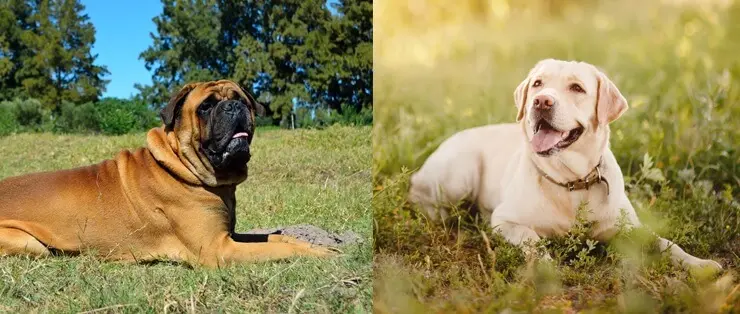
From Adobe Stock
Something to look out for on your Mastador may be that they may have webbed feet, Labradors have webbed feet to make them excellent swimmers and your own puppy may inherit this from their Lab parent.Mastador Size
They are larger than a Labrador but smaller than a Bullmastiff. Classed as a giant dog breed you can expect a fully grown adult to be between 28 and 36 inches tall and weigh between 100 and 160 lbs.
You can expect them to have a strong body and legs with a long slender tail, deep brown expressive eyes and a stocky chest.
Colors
As this is a mixed breed dog, with a large genetic diversity in parent breeds, it is very difficult to predict what your puppy will look like.
If they inherit more of their Labrador parents coloring they will usually be either black, chocolate or golden. In some rarer cases they may have silver or charcoal coat. Sometimes a Bullmastiff Labrador Mix will resemble a Bullmastiff with a coat color of either fawn, red or brindle.
Coat
If your Mastador is a perfect hybrid of the two purebred parents, then you can expect your dog to have a straight, short to medium length coat, and slightly dense fur.
Mastador Temperament
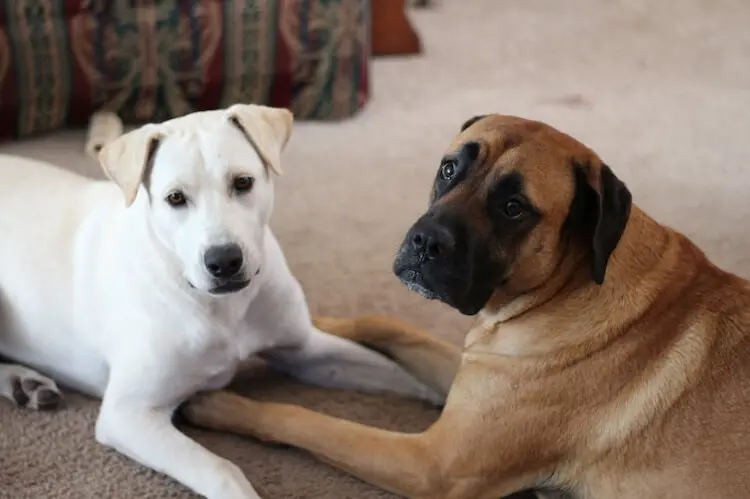
From Adobe Stock
As this dog is a hybrid, it is impossible to predict your dog’s exact personality traits and temperament.
If they are more like a Labrador, they will be kind and even-tempered, with a loving and social nature. If your dog is more like that of the Bullmastiff, they will be more reserved yet courageous.
To get a better understanding of this dog, it may be useful to look at temperaments of the parental crossbreeds.
The Bullmastiff is a powerful and fearless guard dog. First seen in the 1800’s, this dog was bred to be a guard dog to protect against intruders. Despite their looks, bullmastiffs are kind and gentle dogs, known to be loving and wonderful with children.
Some of the protectiveness of the Mastiff may be passed down to the Mastador, therefore this dog may be somewhat reserved and aloof when meeting new people.
The Labrador was first seen in the 18th century, and was bred to help fisherman retrieve fish and to help haul in nets. They are kind, strong and love to please people. They make wonderful family dogs. Unsurprisingly, they have been the most popular dog in America for the past 26 years.
Typically, they are a friendly and sociable dog, however, because of their guard-dog heritage they will require careful socialisation. They are not known to be aggressive dogs unless they perceive a real threat.
These mix dogs are very intelligent and consequently known to be destructive if left alone for too long. However, with lots of mental and physical stimulation these dogs are perfectly content to spend their days napping at your feet (read our exercise guide below).
Although they are on the larger side, this does not mean they believes that they are anything less than a lapdog.
In fact, they are known for its ability to find its role within the family, be it the protector of the house or the loveable couch potato; like their Bullmastiff parent.
These dogs are not known to be barkers and therefore if your dog is barking it may be due to boredom. They have a loud bark that cannot be missed.
Can a Mastador Be a Family Dog?
Yes. This hybrid makes a great family dog due to their loving nature and calm temperament with children.
Like the Boxer Lab Mix , they are naturally friendly and take well to children.
This giant mix is a kind and loving dog who will get on well with all members of the family with good socialisation. However, despite being gentle giants, their large size may be intimidating for younger children and first-time dog owners.
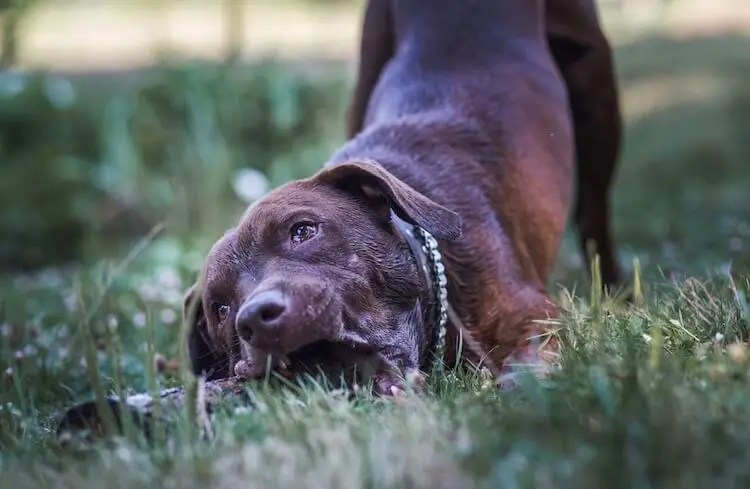
From Adobe Stock
How to Train A Mastador
Mastador puppies mature very quickly in size and temperament and therefore love to learn.
These dogs are very smart, but not hyperactive, making them the perfect trainee. Like their Lab parent they are job and food oriented so will learn very quickly.
Bullmastiff dogs are known to be independent and somewhat resistant to dog training and so it may be best to get a jump start on training your puppy.
Due to their large size and protective nature these dogs will not respond well to any kind of dominance training. To coax out their trainability, try using positive reinforcement and methods such as clicker training.
When training, do not punish your dog as this can lead to a feeling of betrayal in your puppy. This can also create a state of anxiety in your pup which is incredibly unhealthy.
Caring for a Bullmastiff Labrador Mix
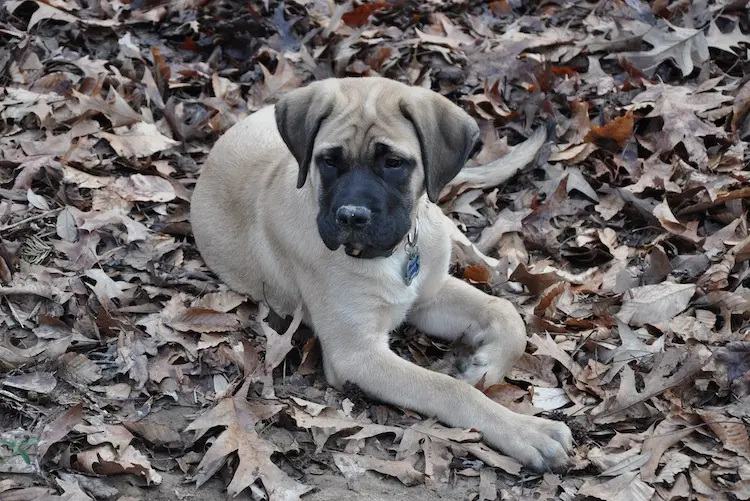
From Adobe Stock
Exercise Requirements
The Mastador is an active dog, needing around 60 minutes of vigorous daily exercise. They will need plenty of mental simulation as well as physical stimulation. Yard play will not be enough to sustain these dogs, although it may supplement them somewhat.
Labradors and Bullmastiffs are both known to be boisterous when not exercised properly which means it is especially important to make sure that you exercise your dog daily.
Moreover, there is evidence, within the Labrador family, that when regularly exercised these dogs show less aggressive tendencies and lower levels of separation anxiety.
It is important to remember that exercise involving lots of jumping or leaping can upset the joints of larger dogs causing health problems such as hip dysplasia, therefore, to try to limit this to a minimum.
Games To Play With Your Dog
As a result of their lineage, Mastadors have a wonderful sense of smell, and will love to play scent-based games. Try playing hide and seek with your puppy; hiding treats, toys or even yourself.
Another thing that may be fun for your dog is guess the hand games. Hide a small treat in your hand and show your dog your fists and ask them to pick which one they think has the treat in. Choose right and they get a tasty reward.
Grooming and Shedding
Your dog’s coat will require weekly brushing and can be expected to have slight shedding throughout the year.
Their coat will shed twice a year seasonally, and so this dog will not be suitable for allergy suffers.
Due to their short and stiff coat, this dog will probably only need bathing a few times a year. However, if you have a particularly active dog who loves to play in the mud you may want to increase this frequency a little.
Their coat requires very little maintenance outside of shedding season. During shedding season, you may want to try brushing using a deshedding brush. They may also require regular ear and eye cleaning.
Feeding and Diet
As the Mastador is a large and highly active dog, you should feed between two to three cups of high quality, grain free kibble each day.
Depending on your particular hybrid’s size you may need to feed up to six cups.
These meals should be spread out at least twice daily, due to this dog’s tendency to bloat if they eat too much too quickly.
There may be some dental hygiene benefits to varying your dogs’ diet between canned and dry food, as both have potential health benefits:
- Dry food acts as a polish for their teeth and helps prevent plaque buildup because of it’s texture.
- Whereas wet food has a higher protein count which will massively benefit your dog’s coat.
- There are some reports of this breed doing well on a raw diet as this also promotes a high protein intake.
If you are concerned about what to feed your puppy it may be best to consult your vet for tailored advice. As your Mastador puppy matures, you can keep track of his weight using the growth chart below:
| Age | Male | Female |
|---|---|---|
| 6 months | 75 pounds | 65 pounds |
| 12 months | 115 pounds | 95 pounds |
| 18 months | 120 pounds | 100 pounds |
Known Health Problems
Monitoring your dog’s food intake and exercise will be crucial to health and wellbeing of your dog; especially given the giant dog size status. This is manageable through diet and exercise. Not only do these dogs tend to bloat if they eat too much too quickly, they are very prone to obesity.
You may want to invest in is a “slow-down bowl” to try and pace your puppies eating.
Both Bullmastiffs and Labradors suffer from hip and elbow dysplasia. This can be managed through diet and exercise.
Other conditions to look out for are Progressive Retinal Atrophy and Arthritis.
None of these health problems should deter you from obtaining one of these gracious dogs. Most live happy and healthy lives.
With a little planning ahead you could get reimbursed for every vet bill from now on!
How Long Do Bullmastiff Labrador Mixes Live For?
The aging profile of dogs is different depending upon their size and weight. Consequently, being a giant dog breed, and weighing from between 100 to 160 lbs, they do not live as long as smaller dogs.
You can expect your Mastador to have a lifespan of between 8 – 12 years of age.
How Much Does A Mastador Cost?
On average, these dogs have a litter size of between six to eight puppies. However, depending on the generation of cross, this can vary slightly and litters can be slightly smaller or larger.
These puppies usually sell for between $900 and $2,000 USD. When looking to purchase a puppy be wary of puppy mills. Make sure to check their purebred parents’ documentation and pedigree.
A good breeder will also let you see the puppies with their mother and may even be able to introduce you to the father. They may also be able to provide you with a health check and vital hip score results of the puppy and parents.
Quick Breed Summary Table
| Breed Characteristics | |
| Size: | 28 to 36 inches tall |
| Weight: | 100-160lbs |
| Lifespan: | 8 – 12 years |
| Coat: | Short to medium dense fur |
| Color: | Black, Chocolate, Golden, Fawn, Red or Brindle |
| Do They Shed: | Yes (Seasonal) |
| Temperament: | Kind, Loyal and Protective |
| Intelligence: | High |
| Activity Levels: | 60 minutes daily |
Summary
So could a Mastador dog be the right dog for your family?
If you are looking for a giant, loyal and brave companion that fits well into your family life and will easily double as a guard dog – then this could be the dog for you. If you are looking for a little less guardianship then take a look at their sibling the German Shepherd Lab Mix.
Beyond the daily walks these dogs require very little maintenance; especially on a grooming perspective.
They do well on most specifically formulated giant breed diets and can live in most climates, although they require a large yard to run around in.
More Bullmastiff and Labrador Retriever Mixes
Want a Bullmastiff mix or Labrador Retriever mix but aren’t keen on the Mastador mix? Check out these other hybrid dog breeds:

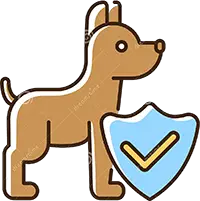

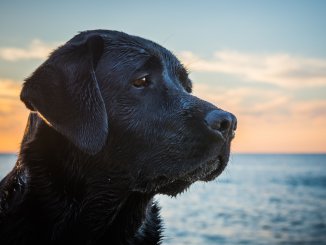
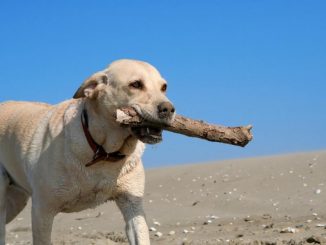
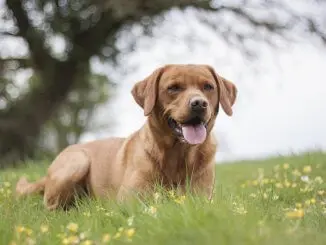


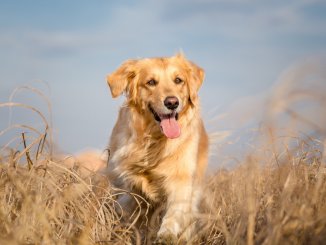
Thank you for this wonderful, informative article on the Mastador! We recently lost our beloved Mastiff-American Bulldog rescue mix, had Labs previously.
I realized after an encounter with a trespasser on our acreage this evening, that, I/we need another great dog — and, asked “Google” for ideas, here YOU and the Mastador were, to help me! Looks like the Mastador can fulfill what we need: a dog not on the “NO!” list as far as insurance carriers are concerned, a dog that is trainable and innately great with family-little kids-farm and our other animal, fam-friends, but on alert as far as unknown “strangers” are concerned and who would give others “pause”, merely and at least by his/her size and alertness.
Thank you, again, for this helpful info. We will be on lookout for two pups, we think; litter mates from a breeder who breeds against the dysplasias, which is important to a happy life for a dog — the least we can do for our beloved doggie friends!
I took in a stray mastador a few years ago. She only lived two short years after treatment for heart worms, I’m now trying to figure out the best way to get a mastador female puppy. Thank you for the info in your article. Feel free to send an e-mail. Thanks again.
I just got one. She’s almost 4 months old. You can text her +1 (904) 829-4243
we have had a purebred female for 9 years now. she has lived up to everything you have said in your description. she’s starting to have some hip problems
had no idea there were groups that recognized this combination
We have had our boy since he was 4 wks old and now he is 5 months old. Weighing at 60 pounds. He is very verbal and has a lot of energy. I love him so much. He loves our grandchildren actually all children. He’s just so big and kinda clumsy. ? He doesn’t mean to but he knocks them down when he is trying to play with them. And you are right he thinks he is a lap dog. I told my husband that we should have named him Clifford ( the big red dog) lol. His name is Ole Red , and has the most beautiful eyes and color coat. ?
Where can we see some of them? We live just outside Fredericton, N B, Canada. Property is 56 acres with a 2 acre lake. Always have had dogs and cats.
Phone no: (506) 472-1303